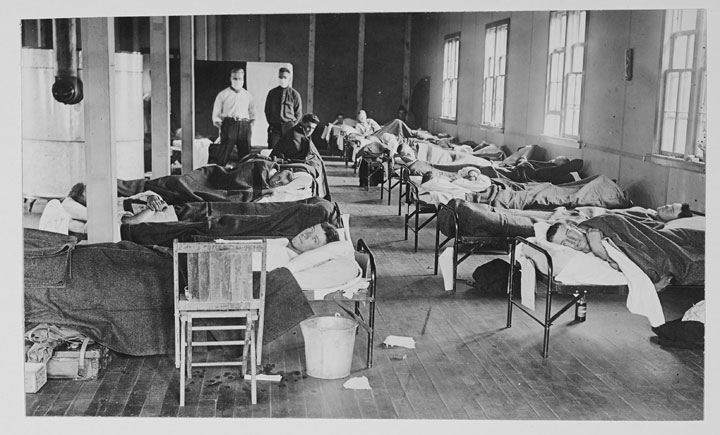In 1918, Kelowna was in a position not too different from the one it’s in today.

It, like cities across the globe, was coping with the restrictions that come with a pandemic, and just when it seemed like it was over, the second wave rolled in.
While the vast majority of the population was spared, local historian Bob Hayes said that the city’s Chinese population wasn’t so lucky. Before the neighbourhood was gripped by disease, though, they were visited by a ghostly figure.
“It’s not a typical story about moaning and groaning ghosts,” he said. “There’s something peaceful about it, and because of the pandemic, so timely.”

Hayes dug up a copy of the Kelowna Record story that ran Nov. 21, 1918, where the ghost story was offered to the larger community.
“(Chinese men) in Kelowna have discovered the cause of the outbreak of Spanish ‘flu’ among them and the consequent deaths,” reads the news story from the time.
The childlike figure never appears again in Kelowna history, let alone newsprint, and Hayes said he’d prefer to think that the figure was warning the men of what was to come, rather than cursing them.

Get breaking National news
Though, a gesture of that kind would have been out of place in the time.
“The Chinese were terribly treated by the white community as a whole,” Hayes said.

The bulk of the population were men, due to the head tax making it too prohibitive for them to bring their children and wives over.
“There were some Chinese women here, but there’s not one grave for a woman at the cemetery,” he said.
The Chinese population was segregated from the larger community at the time. That was exacerbated when the Spanish Flu came through and the area was put under quarantine, and nobody was allowed out or in.
Nine people were killed in the outbreak, which for the time was significant.
It’s all lost in the mists of time, though.
Kelowna’s Chinatown was a vibrant neighborhood from 1900, when it was established, to the 1970s, when it was demolished.
“That in itself is almost ghost-like,” he said. “There’s not a trace of it. When you walk down Leon Avenue down from Abbot to Water, and go down Harvey Avenue, you get no sense there was a community there. And that to me it’s almost haunting.”

Hayes remembers people who prized local history rushing in when the wrecking balls came through in 1970 to try and save what remained in the community. There wasn’t a lot left, but there were remnants from a Chinese store, some residences and a little hospital. Some of the places still had gardens with potatoes growing, he said.
“They were saving furniture and scooping up documents … it wasn’t going to be saved,” he said.
“There were people digging for antique bottles in the yard, finding old bottles and things they thought were related to opium. That was about Thanksgiving in 1971 and within the space of two weeks, Chinatown was gone. The buildings were just flattened for development.”
So much lost history is something Hayes can’t help but think about this time of year.
“Chinatown and the story of that little boy… it’s the one that haunts me,” he said.








Comments